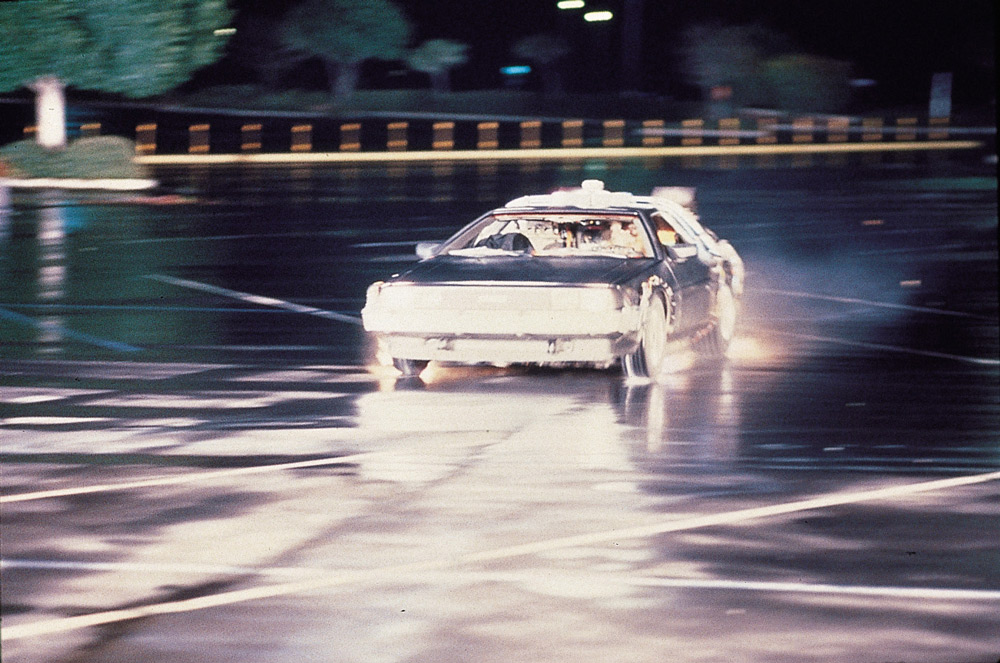
(C) 1985 Universal Studios. All Rights Reserved.
``Back to the Future'' The story of the McFly family and Hill Valley that embodies American history
2017.12.25
Even if we jump to the future and the past, the stage of the story is always the same.
Speaking of Hill Valley's famous landmark, the clock tower (courthouse) plays an important role throughout the trilogy. Shops are gathered facing the square in front of the clock tower, forming the center of the town. Around 1955, when Marty's parents George and Elaine spent their youth, the town was at its peak, and the square was filled with a lively and happy mood. Well, there are some locusts like Biff wandering around too...
However,... Eventually, new residential areas began to be developed around the town, and many of the residents moved to the suburbs, partly due to the increasing number of nuclear families. Already in 1955, construction began on the Lyon housing complex, where the McFly family would later move. In 1985, suburban shopping malls such as Lone Pine Mall, where Doc and Marty conduct their time travel experiments, were built, and the deserted area around Clock Tower Plaza was created by Bob Gale to reflect the social conditions of the time. It's realism.
The important setting in the story, in which the clock in the clock tower broke 30 years ago and has never been repaired, is probably due to the town of Hill Valley itself having lost its momentum. By the way, Lone Pine Mall is located on what used to be Lone Pine Ranch in 1955. It was originally called "Twin Pines Ranch," but when Marty arrived in 1955 and knocked down one of the Twin Pines, which is the origin of the ranch's name, it was renamed Lone Pine. The name was changed to Ranch, and the site became a mall.

"Back to the Future" (C) 1985 Universal Studios. All Rights Reserved.
Goldie Wilson, an African-American citizen who is the mayor in the 1985 Back to the Back to the Future, was working as a servant at a cafe in 1955.
The reason behind the appointment of an African mayor is the support of African and other minority residents. In the United States, as the middle class moved to the suburbs, poor people of African descent began to live in the center of towns, frequently reinforcing inequality and racial discrimination, which became a social problem. It is believed that the same phenomenon occurred in Hill Valley. It is true that Wilson set his sights on becoming mayor, but if it weren't for the historical fact that the civil rights movement flourished in the 1950s and 1960s and racially discriminatory restrictions on voting rights were abolished, Wilson would have been elected mayor. It wouldn't have happened.
Hill Valley, a fictional town that embodies American history

